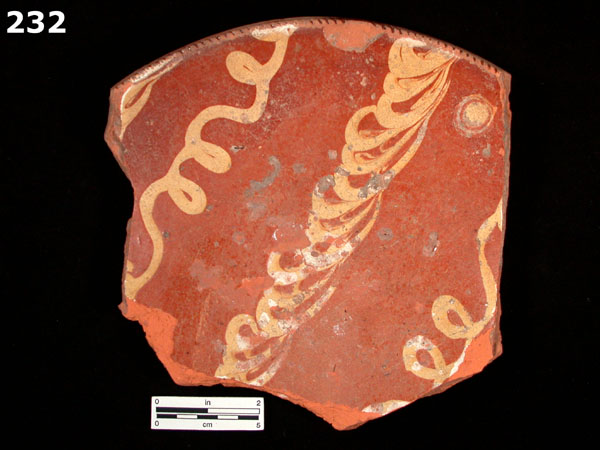View all examples of SLIPWARE, SLIP-TRAILED REDWARE

| Type Name: | SLIPWARE, SLIP-TRAILED REDWARE |
| Type Index: | SLIPWARE |
| Production Origin: | NORTH AMERICA |
| Date Range: | 1750-1820 |
| Defining Attributes: |
Red to red-orange coarse earthenware paste. Decoration is applied by slip-trailing in white, and is simple and geometric. Designs include broad bands, stripes, loops and lobes. The interior surface is covered with a clear lead glaze. Vessel walls are generally heavy, reflecting the utilitarian nature of this pottery. |
| Vessel Forms: |
BOWL CANDLE HOLDER CHAMBER POT JAR JUG PAN PITCHER PLATE PLATTER SAUCER TEA POT |
| Comments: | Simple, slip-trailed redware vessels were produced at several locations in the Anglo-American colonies after 1750, initially by German potters who emigrated to Pennsylvania, New England and North Carolina. The simple geometric band and loop decoration on utilitarian forms is often referred to as "Philadelphia style", although as noted such wares were made in a number of centers in Eastern North America. The are most common from the third quarter of the eighteenth century into the first decades of the nineteenth century. |
| Published Definitions: | Bower 1985; Magid and Means 2003 |